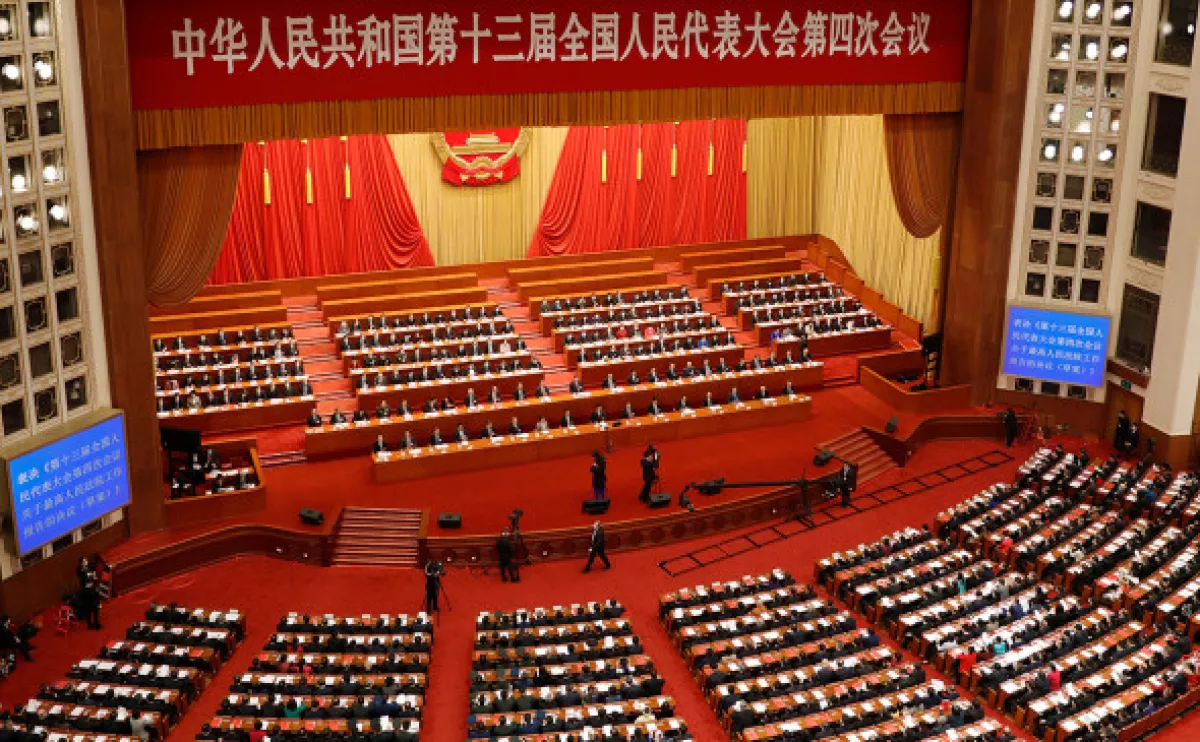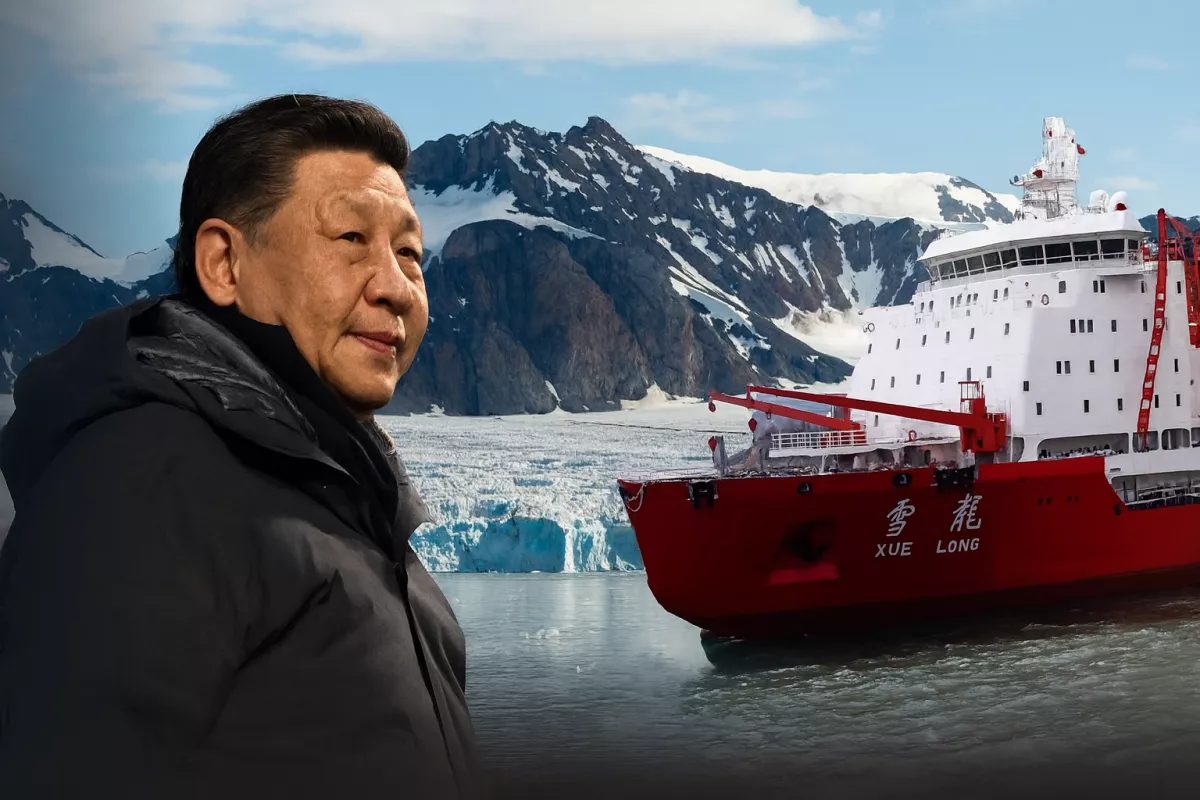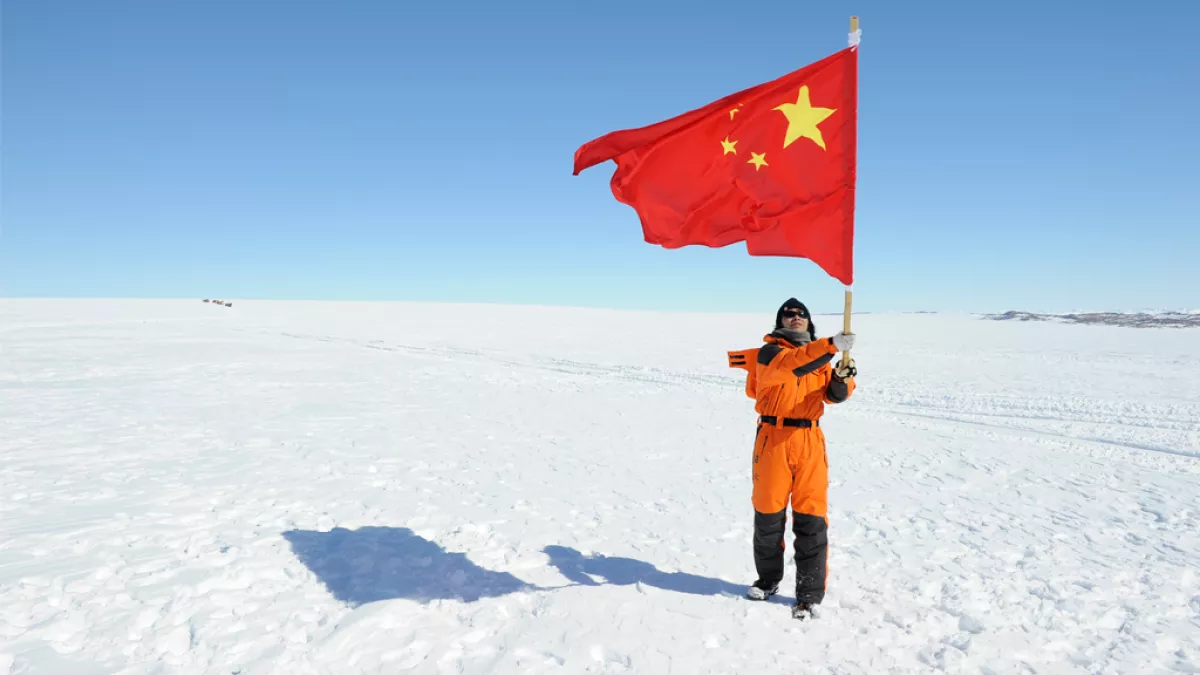China’s Arctic policy: A new bridge between continents The Polar Silk Road
In March 2021, during the annual session of the National People’s Congress in Beijing, China’s leadership officially adopted the 14th Five-Year Plan for the country’s socio-economic development, along with long-term objectives extending to 2035.
Much like in the former Soviet Union, five-year plans in China serve as strategic frameworks guiding the nation’s political and economic trajectory. Once approved, they function as comprehensive “roadmaps” that chart the course of the People’s Republic for the years ahead — covering everything from elderly care to global governance and quantum physics.

For the first time in China’s history, the Arctic was explicitly mentioned in one of the country's Five-Year Plans. Chapter 33, titled “Development of the Marine Economy,” states that China “will increase practical cooperation with coastal countries in the fields of marine environmental monitoring and protection, scientific research and maritime search and rescue, and intensify the investigation and evaluation of deep-sea strategic resources and biodiversity; […] will join in practical cooperation in the Arctic and build the ‘Silk Road on Ice’; […] will enhance … [its] ability to participate in the Antarctic conservation and utilization.”
Although the Arctic is referenced in just a single line within this extensive document, the context in which it appears is crucial. The region is discussed in a section devoted to maritime governance and the development of the ocean economy—an indication of China’s geopolitical vision for the Arctic. For Beijing, the Arctic represents a strategically significant frontier beyond the sovereign jurisdiction of individual nations, where international norms are either still evolving or yet to be firmly established. This creates an opening for China to participate in the competition over the region’s resources and transport corridors.
China’s 2021 programme places particular emphasis on the country’s role as an international norm-setter, shaping a new global maritime order through both bilateral and multilateral diplomacy.
At the conference “Science Diplomacy as a Tool to Preserve Dialogue in the Arctic,” Chinese representatives stated: “China is closely connected to the interregional and global challenges facing the Arctic, particularly those related to climate change, the environment, scientific research, maritime navigation, resource exploration and development, security, and international governance. These issues concern the survival and development of all countries and of humanity as a whole.
As a permanent member of the UN Security Council, China bears an important responsibility for maintaining peace and security in the Arctic. As one of the world’s largest trading nations and a leading energy consumer, China recognises that the development of Arctic sea routes and resource exploitation could significantly influence its energy strategy and economic growth.

China’s capital, technologies, markets, knowledge, and expertise can play a vital role in expanding the network of Arctic routes and promoting the economic and social development of Arctic countries, whose interests and benefits are intertwined with those of China.”
Notably, the concept of the “Polar Silk Road” has emerged in recent discourse. While it is typically viewed as the Arctic extension of the Belt and Road Initiative (BRI)—China’s global infrastructure and trade strategy—some experts argue it should more accurately be seen as part of Beijing’s broader ambition to dominate the world’s oceans. For example, Chapter 41 of the Five-Year Plan, which is dedicated to the BRI, makes no mention of the Polar Silk Road at all. According to analysts, this omission further highlights the fact that, for China, the Arctic is not merely another region for investment and infrastructure projects by state-owned enterprises. Rather, it is regarded as open maritime space—one in which the rules of control and engagement are still in flux.
Subsequently, following the adoption of the 14th Five-Year Economic Plan, China’s State Council released a draft five-year plan for the development of the national transport sector. In this document, the Arctic is viewed as an integral component of China’s strategy to diversify access to global transport corridors and ensure the steady supply of strategic resources such as oil, liquefied natural gas, grain, iron ore, and more. To this end, the plan proposes strengthening four key routes: the Pacific route through Japan and South Korea to North and South America; routes through Southeast Asia to Oceania; via Southeast and South Asia and the Indian Ocean to Europe and Africa; and the Polar Silk Road through the Arctic Ocean.
According to Zhao Zelin, Senior Research Fellow at the Centre for Strategic Studies of the Faculty of Economics at the Peoples’ Friendship University of Russia, compared to other routes, those crossing the Arctic Ocean reduce tonnage restrictions for transiting vessels and shorten the distance to most major ports. This, in turn, may ease the burden on traditional maritime arteries such as the Suez and Panama Canals.
China lies along the extension of the Arctic route and stands as one of the largest maritime powers in the Northern Hemisphere. Its economy is highly dependent on seaborne trade.
Arctic development is seen as a way to mitigate the so-called “Malacca Dilemma”—the strategic vulnerability of China’s maritime energy supply routes—as well as to reduce the risk of potential conflicts in the South China Sea and to establish a strategic buffer for protecting critical fossil fuel supply lines. However, Chinese experts also point out that the Arctic route’s economic viability is limited by the one-way nature of hydrocarbon shipments and the lack of return cargo, which weakens its overall commercial appeal.

It is also notable that, unlike earlier versions, recent official documents make no mention of joint efforts to build the Polar Silk Road. Initially, the project was framed as a China–Russia initiative. But since 2018, it has increasingly been portrayed as a purely Chinese vision for managing the Arctic.
Nevertheless, current geopolitical realities have forced Beijing to revise its ambitious plans. Following the COVID-19 pandemic and the outbreak of war in Eastern Europe, the concept of a Silk Road spanning the entire Asian region has undergone a shift. Today, China appears more inclined to support existing multilateral frameworks in the Arctic rather than push forward with new, self-initiated projects from scratch.








